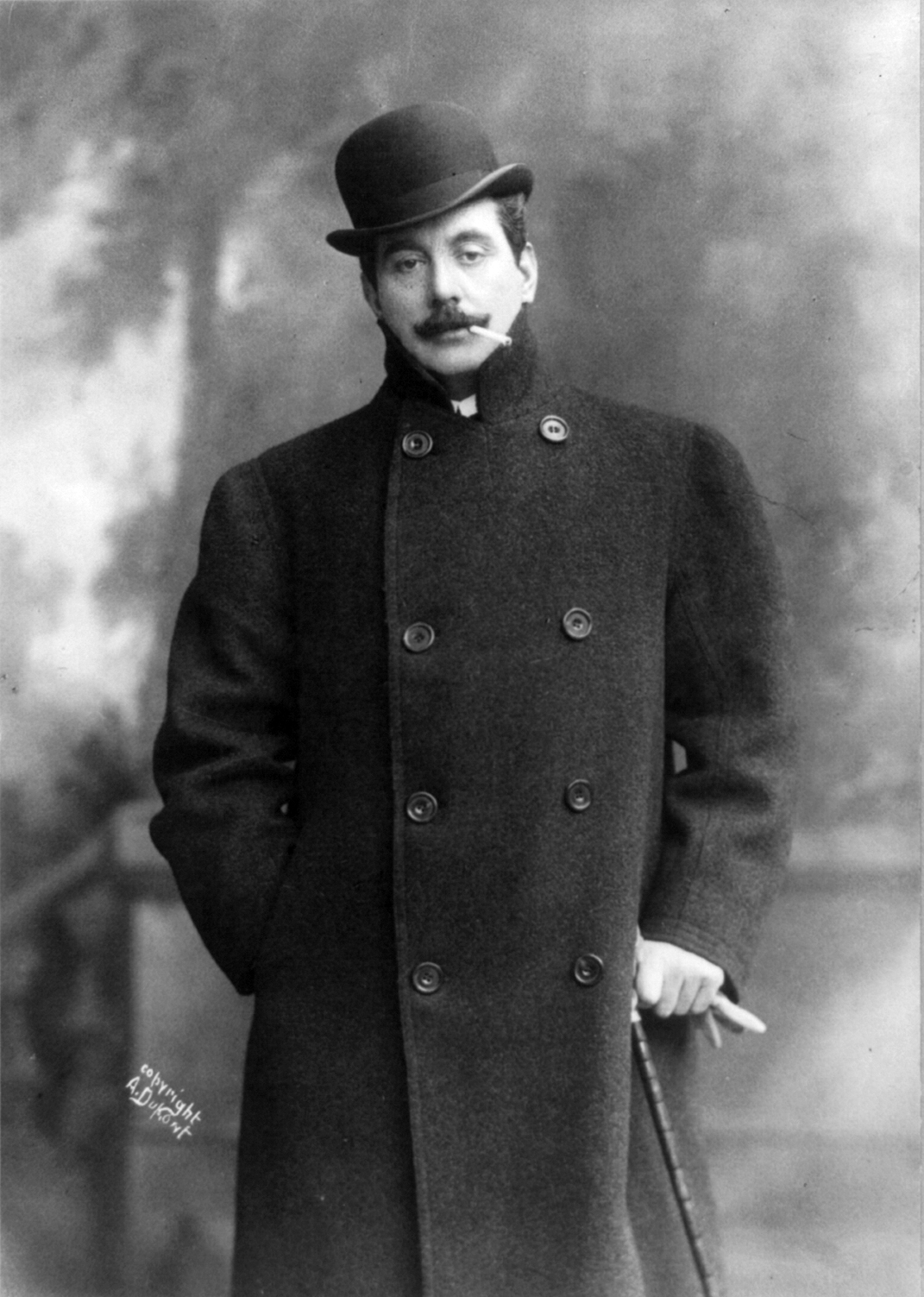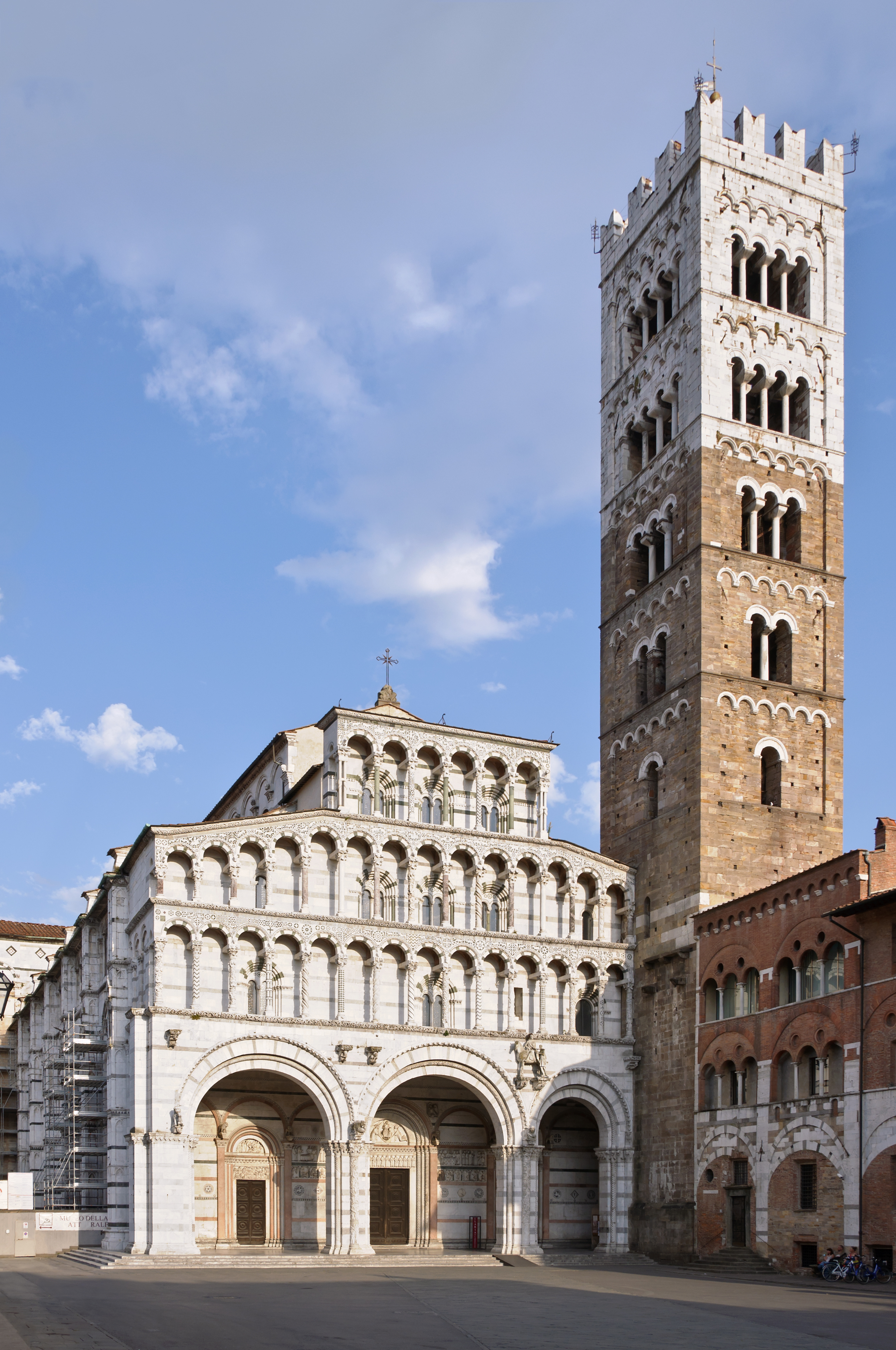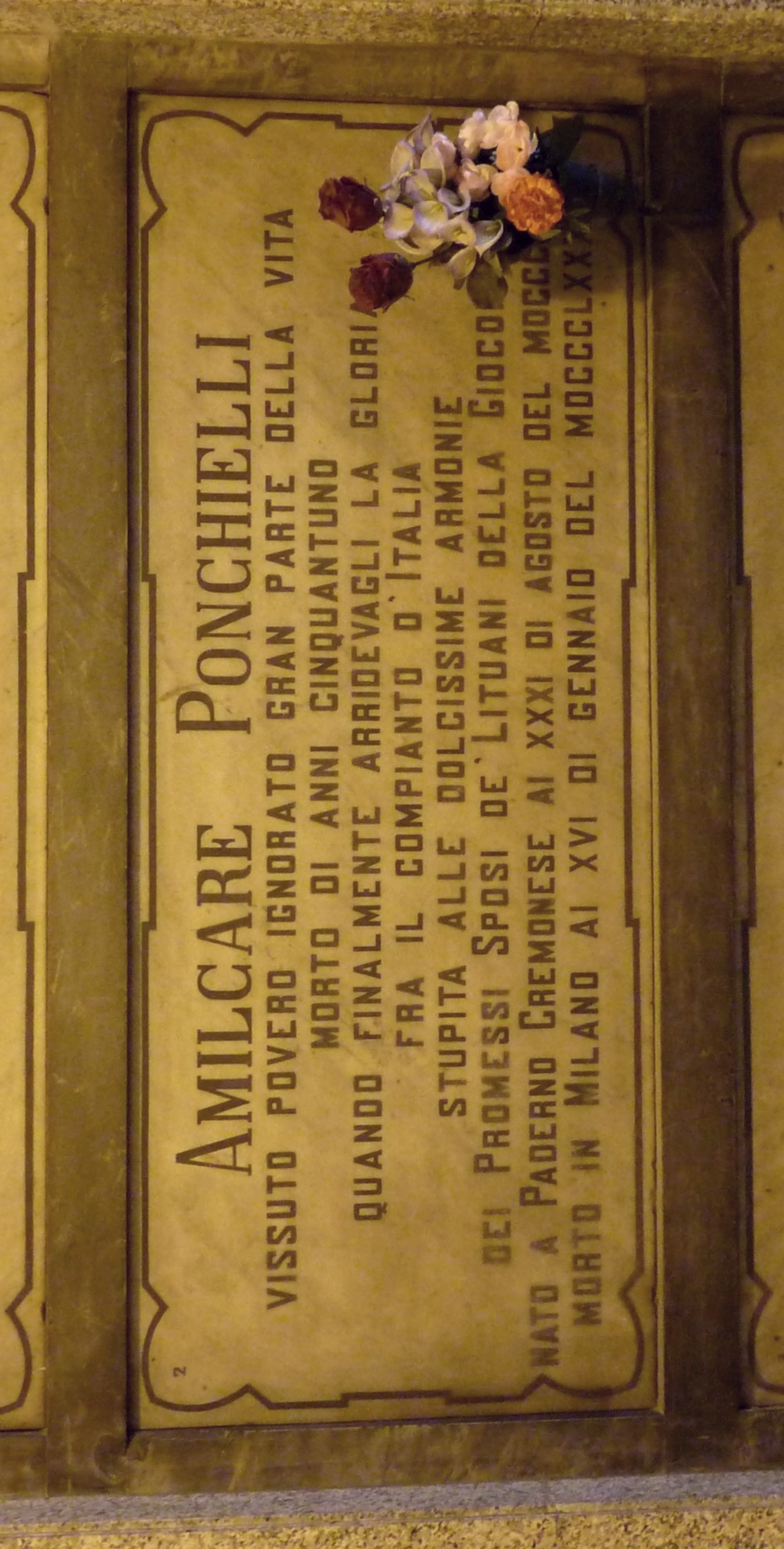|
Giacomo Puccini
Giacomo Puccini (22 December 1858 29 November 1924) was an Italian composer known primarily for List of compositions by Giacomo Puccini#Operas, his operas. Regarded as the greatest and most successful proponent of Italian opera after Verdi, he was descended from a long line of composers, stemming from the late Baroque music, Baroque era. Though his early work was firmly rooted in traditional late-nineteenth-century Romantic Italian opera, it later developed in the realistic ''verismo'' style, of which he became one of the leading exponents. His most renowned works are ''La bohème'' (1896), ''Tosca'' (1900), ''Madama Butterfly'' (1904), and the unfinished ''Turandot'' (posthumously completed by Franco Alfano), all of which are among the most List of important operas, frequently performed and recorded in the entirety of the operatic repertoire. Family and education Born in Lucca in the Grand Duchy of Tuscany, in 1858; he was the sixth of nine children of Michele Puccini (1813â ... [...More Info...] [...Related Items...] OR: [Wikipedia] [Google] [Baidu] |
Lucca
CittĂ di Lucca ( ; ) is a city and ''comune'' in Tuscany, Central Italy, on the Serchio River, in a fertile plain near the Ligurian Sea. The city has a population of about 89,000, while its Province of Lucca, province has a population of 383,957. Lucca is known as an Italian "CittĂ d'arte" (City of Art) from its intact Renaissance-era Walls of Lucca, city walls and its very well preserved historic center, where, among other buildings and monuments, are located the Piazza dell'Anfiteatro, which has its origins in the second half of the 1st century A.D., the Guinigi Tower, a tower that dates from the 14th century and the Cathedral of San Martino. The city is the birthplace of numerous world-class composers, including Giacomo Puccini, Alfredo Catalani, and Luigi Boccherini. Toponymy To the Ancient Rome, Ancient Romans, Lucca was known as ''Luca''. From more recent and concrete toponymic studies, the name Lucca has references that lead to "sacred grove" (Latin: ''lucus''), " ... [...More Info...] [...Related Items...] OR: [Wikipedia] [Google] [Baidu] |
Lucca Cathedral
Lucca Cathedral () is a Roman Catholic cathedral dedicated to Saint Martin of Tours in Lucca, Italy. It is the seat of the Archbishop of Lucca. History Old Cathedral A church was built on the site in the 6th centuryCarlo Biscotti, Notizie sommarie riguardanti le chiese, i benefizj ed il clero della archidiocesi di Lucca'' , (Lucca: dalla tipografia Giusti, 1853), pp. 45-46. Cappelletti XV, pp. 543-548. and at the beginning of the 8th century, the seat of the bishop was transferred from the church of San Reparto to the current site. The most precious relic in Lucca, the Holy Face of Lucca according to legend carved by a contemporary of Jesus and through a series of miraculous events arrived in the church in 782. Construction of the current Cathedral Construction of the current cathedral was begun in 1060 by Bishop Anselm (who would later become Pope Alexander II). It was consecrated by Pope Alexander in 1070. A west west front was begun in 1204 by Guido Bigarelli of Como. ... [...More Info...] [...Related Items...] OR: [Wikipedia] [Google] [Baidu] |
Church Music
Church music is a genre of Christian music written for performance in church, or any musical setting of ecclesiastical liturgy, or music set to words expressing propositions of a sacred nature, such as a hymn. History Early Christian music The only record of communal song in the Gospels is the last meeting of the disciples before the Crucifixion. Outside the Gospels, there is a reference to St. Paul encouraging the Ephesians and Colossians to use psalms, hymns and spiritual songs. Later, there is a reference in Pliny the Younger who writes to the emperor Trajan (53–117) asking for advice about how to persecute the Christians in Bithynia, and describing their practice of gathering before sunrise and repeating antiphonally "a hymn to Christ, as to God". Antiphonal psalmody is the singing or musical playing of psalms by alternating groups of performers. The peculiar mirror structure of the Hebrew psalms makes it likely that the antiphonal method originated in the servic ... [...More Info...] [...Related Items...] OR: [Wikipedia] [Google] [Baidu] |
Messa (Puccini)
Giacomo Puccini's ''Messa'' or ''Messa a quattro voci'' (currently more widely known under the apocryphal name of ''Messa di Gloria'') is a Mass (music), Mass composed for orchestra and four-part choir with tenor and baritone soloists. Strictly speaking, the piece is a full Mass, not a true ''Messa di Gloria'' (which contains only the Kyrie and Gloria in Excelsis Deo, Gloria and omits the Credo, Sanctus, Sanctus, Benedictus and Agnus Dei). History Puccini composed the Mass as his graduation exercise from the Istituto Musicale Pacini. It had its first performance in Lucca on July 12, 1880. However, the ''Credo'' had already been written and performed in 1878 and was initially conceived by Puccini as a self-contained work. Puccini never published the full manuscript of the ''Messa'', and although well received at the time, it was not performed again until 1952 (first in Chicago and then in Naples). However, he re-used some of its theme (music), themes in other works, such as the Agn ... [...More Info...] [...Related Items...] OR: [Wikipedia] [Google] [Baidu] |
Pietro Mascagni
Pietro Mascagni (7 December 1863 – 2 August 1945) was an Italian composer primarily known for his operas. His 1890 masterpiece '' Cavalleria rusticana'' caused one of the greatest sensations in opera history and single-handedly ushered in the '' Verismo'' movement in Italian dramatic music. While it was often held that Mascagni, like Ruggero Leoncavallo, was a "one-opera man" who could never repeat his first success, '' L'amico Fritz'' and '' Iris'' have remained in the repertoire in Europe (especially Italy) since their premieres. Mascagni wrote fifteen operas, an operetta, several orchestral and vocal works, and also songs and piano music. He enjoyed immense success during his lifetime, both as a composer and conductor of his own and other people's music and created a variety of styles in his operas. Biography Early life and education Mascagni was born on 7 December 1863 in Livorno, Tuscany, the second son of Domenico and Emilia Mascagni. His father owned and operated a ... [...More Info...] [...Related Items...] OR: [Wikipedia] [Google] [Baidu] |
Antonio Bazzini
Antonio Bazzini (11 March 181810 February 1897) was an Italian violinist, composer and teacher. As a composer, his most enduring work is his chamber music, which earned him a central place in the Italian instrumental renaissance of the 19th century. However, his success as a composer was overshadowed by his reputation as one of the finest concert violinists of the nineteenth century. He also contributed to a portion of Messa per Rossini, specifically the first section of ''II. Sequentia'', Dies Irae. Biography Bazzini was born at Brescia. As a young boy, he was a pupil of a local violinist . At 17, he was appointed organist of a church in his native town. The following year, he met Niccolò Paganini, Paganini and became completely influenced by that master's art and style. Paganini encouraged Bazzini to begin his concert career that year, and he quickly became one of the most highly regarded artists of his time. From 1841 to 1845, he lived in Germany, where he was much admired by ... [...More Info...] [...Related Items...] OR: [Wikipedia] [Google] [Baidu] |
Amintore Galli
Amyntor "Amintore" Flaminio Claudio Galli (12 October 1845 – 8 December 1919) was an Italian music publisher, journalist, historian, musicologist, and composer. Born in the Marecchia valley, Galli was educated under Alberto Mazzucato at the Milan Conservatory. In 1874, he became artistic director of Edoardo Sonzogno's new , for which he directed several magazines. Galli distinguished Sonzogno by publishing renowned operas at affordable prices, and under his direction, it became one of Italy's leading musical publishing houses. He translated several librettos and wrote original recitatives. As Director of ''Il teatro illustrato'', Galli oversaw Sonzogno's musical competitions, the second of which notably produced ''Cavalleria rusticana'' by his former pupil Pietro Mascagni, to whom Galli was particularly close. Between 1878 and 1903, Galli was Chair of Counterpoint and Musical Aesthetics at the Milan Conservatory. Galli's students included Ruggero Leoncavallo, Umberto Giordan ... [...More Info...] [...Related Items...] OR: [Wikipedia] [Google] [Baidu] |
Amilcare Ponchielli
Amilcare Ponchielli (, ; 31 August 1834 – 16 January 1886) was an Italian opera composer, best known for his opera La Gioconda (opera), ''La Gioconda''. He was married to the soprano Teresina Brambilla. Life and work Born in Paderno Fasolaro (now Paderno Ponchielli) near Cremona, then Kingdom of Lombardy-Venetia, Ponchielli won a scholarship at the age of nine to study music at the Milan Conservatory, writing his first symphony by the time he was ten years old. In 1856, he wrote his first opera—based on Alessandro Manzoni's novel ''The Betrothed (Manzoni novel), The Betrothed'' (''I promessi sposi'')—and it was as an opera composer that he eventually found fame. His early career was disappointing. Manoeuvred out of a professorship at the Milan Conservatory that he had won in a competition, he took small-time jobs in small cities and composed several operas, none successful at first. In spite of his disappointment, he gained much experience as the bandmaster (''capobanda'') ... [...More Info...] [...Related Items...] OR: [Wikipedia] [Google] [Baidu] |
Stefano Ronchetti-Monteviti
Stefano Ronchetti-Monteviti (1814–1882) was an Italian composer, music educator, and college administrator. Born in Asti, he joined the faculty of the Milan Conservatory in 1850 as a professor of counterpoint. He was appointed the school's director in 1878, a post he held until illness forced him to resign in November 1881. He died the following year in Casale Monferrato. His notable pupils included Franco Faccio, Giacomo Puccini, and Ivan Zajc. His compositional output mainly consists of sacred music. His opera ''Pergolese'' premiered at La Scala on 16 March 1857. It used a libretto by Temistocle Solera Temistocle Solera (25 December 1815 – 21 April 1878) was an Italian opera composer and librettist. Life and career He was born in Ferrara. He received his education at the Imperial College in Vienna and at the University of Pavia. Throughou ... and starred soprano Maria Spezia-Aldighieri. References 1814 births 1882 deaths 19th-century Italian classical compo ... [...More Info...] [...Related Items...] OR: [Wikipedia] [Google] [Baidu] |
Milan Conservatory
The Milan Conservatory, also known as the Conservatorio di Milano and the Conservatorio Giuseppe Verdi, is a Music school, college of music in Milan, Italy. History The conservatory was established by a royal decree of 1807 in Milan, capital of the Napoleonic Kingdom of Italy (Napoleonic), Kingdom of Italy. It opened the following year with premises in the cloisters of the Baroque (architecture), Baroque church of Santa Maria della Passione. There were initially eighteen boarders, including students of both sexes. Today it is the largest institute of musical education in Italy. (In the ''Conservatorio'' drop down menu) Alumni and faculty In its 200-year history, the conservatory has educated some of Italy's most prominent musicians and conductors, including Fausto Romitelli, Oscar Bianchi, Luca Francesconi, Stefano Gervasoni, Marco Stroppa, Giacomo Puccini, Alfredo Piatti, Amilcare Ponchielli, Arrigo Boito, Giovanni Bottesini, Alfredo Catalani, Riccardo Chailly, Amelita Galli- ... [...More Info...] [...Related Items...] OR: [Wikipedia] [Google] [Baidu] |
Margherita Of Savoy
Margherita of Savoy (''Margherita Maria Teresa Giovanna''; 20 November 1851 – 4 January 1926) was List of Italian royal consorts, Queen of Italy by marriage to her first cousin King Umberto I of Italy. She was the daughter of Prince Ferdinando, Duke of Genoa (1822–1855), Prince Ferdinando of Savoy, Duke of Genoa and Princess Elisabeth of Saxony, and the mother of the King Victor Emmanuel III of Italy. Life Early life Margherita was born to Prince Ferdinando, Duke of Genoa (1822–1855), Prince Ferdinando of Savoy, Duke of Genoa, and Princess Elisabeth of Saxony. Her father died in 1855, and her mother remarried Morganatic marriage, morganatically to Major Nicholas Bernoud, Marchese di Rapallo. She was educated by Countess Clelia Monticelli di Casalrosso and her Austrian governess Rosa Arbesser. Reportedly, she was given a more advanced education than most princesses at the time, and displayed a great deal of intellectual curiosity. As a person, she was described as sensiti ... [...More Info...] [...Related Items...] OR: [Wikipedia] [Google] [Baidu] |
Alfredo Catalani
Alfredo Catalani (19 June 1854 – 7 August 1893) was an Italian operatic composer. He is best remembered for his operas '' Loreley'' (1890) and '' La Wally'' (1892). ''La Wally'' was composed to a libretto by Luigi Illica, and features Catalani's most famous aria "Ebben? Ne andrò lontana." This aria, sung by American soprano Wilhelmenia Fernandez, was at the heart of Jean-Jacques Beineix's 1981 film '' Diva''. Catalani's other operas were much less successful. Life and career Born in Lucca, Catalani came from a musical family. He was trained at the Milan Conservatory, where his teachers included Antonio Bazzini. Despite the growing influence of the '' verismo'' style of opera during the 1880s and early 1890s, Catalani chose to compose in a more traditional manner, which had traces of Wagner in it. As a result, his operas (''La Wally'' excepted) have largely lost their place in the modern repertoire, even compared to those of Massenet and Puccini, whose style his own peri ... [...More Info...] [...Related Items...] OR: [Wikipedia] [Google] [Baidu] |






